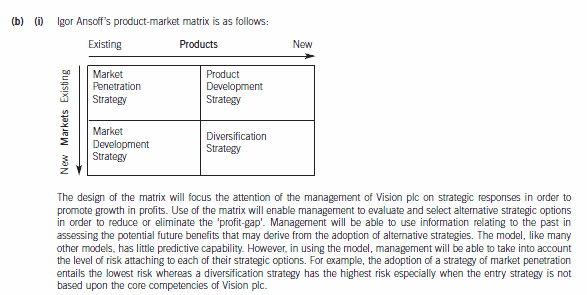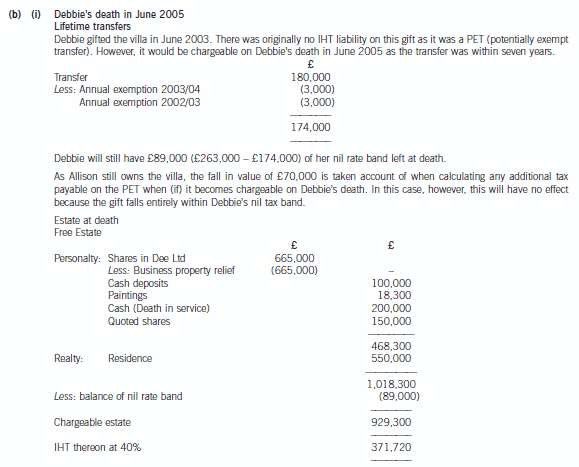什么?北京市考生2020年ACCA考试不知道看什么书?那么下面的教材宝典你必须收藏
发布时间:2020-01-09
新年伊始,步入2020年,离3月份的ACCA考试越来越近了,相信感兴趣的小伙伴都已经报了名,但51题库考试学习网听说有很多小伙伴们不知道复习应该看什么书,手足无措,不知道该怎么复习。不用担心这个问题,51题库考试学习网会逐一为大家解答困惑:
大家都知道教材是考试复习的基础,跟其他考试一样,考ACCA也是如此,几乎每个ACCA的小伙伴都会买教材,但是并不是每一个小伙伴都会把教材读懂读透。习题固然要练,但是教材才是考试的出题来源,因此小伙伴有必要在练题之前先确保自己已经熟练掌握教材的内容了。希望对大家有所帮助!
在这里51题库考试学习网建议大家可以利用的教材有BPP教材和FTC教材,两者的差别在于BPP教材是全球ACCA使用最多的版本,而FTC版是ACCA官方版本教材,在全球使用也比较多。相对于BPP教材,FTC这套教材的优点是简洁,基本上每门课教材都比BPP版薄,但是FTC对F4阶段的ACCA备考并不是那么适用,其难度较之BPP版有所加大,所用单词也要复杂一些。因此BPP教材的优点也就是相当于FTC来说英语单词较为基础,容易被初学者吸收。同时对于最新FTC版有些地方讲解不是很细致,单凭它参加考试有一定难度
目前这两种都较适合中国ACCA考生,如何选择的关键就在于考生自己,英语基础强一点的,学习效率高的考生就可以选择FTC可能效果好一些;反之,如果是英语相对薄弱一点的,学习能力一般的考生,就可以选择基础的BPP教材。其实,没有万能的学习方法,适合自己的学习方法那才是最好的复习方法,可以借鉴但不提倡照搬。
需要注意的是,每一年ACCA的14门课都会更新他们的TEXT BOOK和练习册。而这两本书,练习册往往被很多小伙伴重视,却偏偏忽视TEXT BOOK。很多的同学复习的时候喜欢记要点,而不愿意花时间读原汁原味的原版书籍。其实这是一个很不好的习惯,既不利于我们准确地把握知识点,也影响了我们专业英语能力的提高。
51题库考试学习网建议各位小伙伴在考试的三个月前,一定要用心看TEXT BOOK。先用一到两个月把书认真地读一遍,再上课、做题直到考前冲刺。考完试后不要着急把书丢在一边拿,大家可以把自己喜欢的章节保留下来,便于以后进一步学习或闲暇时看看读读。当然,千万不要忘记关注ACCA官网的更新,及时下载学习资料。
以上就是报考ACCA的具体规则和流程,想要了解更多2020年ACCA的相关资讯,欢迎加入关注51题库考试学习网,51题库考试学习网将不定时更新你想了解的咨询~
下面小编为大家准备了 ACCA考试 的相关考题,供大家学习参考。
(b) State the enquiries you would make of the directors of Mulligan Co to ascertain the adequacy of the
$3 million finance requested for the new production facility. (7 marks)
(b) It is important to appreciate that the finance request should cover not only the cost of the construction of the new facility, but
also costs in order to get the business unit up and running, and enough cash to meet initial working capital requirements.
Mulligan Co may have sufficient cash to cover such additional expenses, but the bank will want comfort that this is the case.
Enquiries would include the following:
Who has prepared the forecast? It is important to evaluate the experience and competence of the preparer. If management
has previously prepared forecasts and capital expenditure budgets that were reliable and accurate, this adds a measure of
confidence in the preparation of the new forecast and the underlying assumptions used.
To what extent is internal finance available to cover any shortfall in the finance requirement? If there is surplus cash within
the organisation then the bank need not provide the full amount of finance necessary to start up the new business operation.
Has the cost of finance been included in the forecast? It appears that this cost is missing. Finance costs should be calculated
based on the anticipated interest rate to be applied to the loan advanced, and included in the total finance requirement.
What is the forecast operating cycle of the new business unit? In particular how long is the work in progress period, and how
much credit will be extended to customers? i.e. when will cash inflows specific to the new business unit be received? More
finance might be required to fund initial working capital shortfalls during the period when work in progress is occurring, and
before cash receipts from customers are received.
Will further raw materials be required? A request has been made for $250,000 for raw materials of timber. Other materials
may need to be purchased, for example, non-timber raw materials, and inventory of other consumables such as nuts and
bolts.
How long will the ‘initial’ inventory of raw material last? What is the planned work in progress time for the new product? More
finance may be needed to avoid a stock out of raw materials.
Construction of the new factory – is there any documentation to support the capital expenditure? For example, architect’s
plans, surveyor’s reports. This will support the accuracy of the finance requested and is an important source of evidence given
the materiality of the premises to the total amount of finance requested.
How likely is it that costs may be subject to inflation before actually being incurred? This could increase the amount of finance
required by several percentage points.
Have quotes been obtained for the new machinery to be purchased?
Purchase of new machinery – will any specific installation costs be incurred? These costs can be significant for large pieces
of capital equipment. Also, enquiries should be made regarding any delivery costs.
The budget does not appear to contain any finance request for overheads such as use of electricity during the construction
period, and hire of installation equipment. Have these overheads been included in the construction cost estimate?
Will staff need to be trained in using the new machinery? If so, any incremental costs should be included in the finance
request.
Advertising and marketing of new product – enquire of Patrick Tiler the methods that will be used to market the new product.
Some types of advertising are more of a cash drain due to their high expense e.g. television advertising is expensive and ‘up
front’ compared to magazine advertising, which is cheap and spread out. As Patrick Tiler is new to Mulligan Co, his forecast
is not based on past experience of this particular business.
LCT Bank will also consider the recoverability of the amount advanced by looking at the cash generating potential of the new
business unit. Enquiries should therefore be made regarding the likely success of the new products, for example:
– Has any market research been carried out to support the commercial viability of the new products?
– Have any contracts with retailers to carry the new products been negotiated?
– How quickly have past products generated a cash inflow?
– Is there a contingency plan in place in case the new products fail to be successful?
(b) (i) Explain how the use of Ansoff’s product-market matrix might assist the management of Vision plc to
reduce the profit-gap that is forecast to exist at 30 November 2009. (3 marks)

(b) (i) Calculate the inheritance tax (IHT) that will be payable if Debbie were to die today (8 June 2005).
Assume that no tax planning measures are taken and that there has been no change in the value of any
of the assets since David’s death. (4 marks)

(ii) An evaluation of the environmental and sustainability implications of the Giant Dam Project; (8 marks)
(ii) Environmental and sustainability implications of the Giant Dam Project
In our preparation for the bid to act as principal contractor for the Giant Dam Project, we established that there were
two prominent negative implications of the project but these are, in our view, more than offset by two major
environmental positives.
The environmental arguments against the Giant Dam Project both concern the flooding of the valley behind the dam.
Regrettably, it seems that there will be some loss of important habitats. This, in turn, may mean the removal of balanced
environmental conditions for certain animal and plant species. In addition, the flooding of the valley will result in the
loss of productive farmland. This will mean reduced capacity for the host country to grow food and thus support citizens
such as the members of First Nation. From our point of view, as the board of R&M, however, we would remind
shareholders and other observers that the decisions involving the size and positioning of the Giant Dam were taken by
the client, the government. It is R&M’s job, having won the contract as principal contractor, to now carry out the plans,
regardless of our own views.
Happily, however, there are two very powerful environmental arguments in favour of the Giant Dam Project. It will create
a large source of clean energy for economic development that will be sustainable, as it will create no carbon emissions
nor will it consume any non-renewable resources as it does so (compared to, for example, fossil fuels).
At a time when people are becoming very concerned about greenhouse gases produced from conventional power
generation, the Giant Dam Project will contribute to the East Asian country’s internationally agreed carbon reduction
targets. This, in turn, will contribute to the reduction of greenhouse gases in the environment.
It is clear that the construction of the Giant Dam Project is an environmental conundrum with strong arguments on both
sides. The deciding factor may be the opinion that we each have of the desirability of economic growth in the East Asian
country (which the energy from the dam is intended to support). It seems that Stop-the-dam values the preservation of
the original environment more than the economic growth that the energy from the dam would support. The client does
not agree with this assessment and we are happy to be involved with a project that will create such a useful source of
renewable and non-polluting energy.
声明:本文内容由互联网用户自发贡献自行上传,本网站不拥有所有权,未作人工编辑处理,也不承担相关法律责任。如果您发现有涉嫌版权的内容,欢迎发送邮件至:contact@51tk.com 进行举报,并提供相关证据,工作人员会在5个工作日内联系你,一经查实,本站将立刻删除涉嫌侵权内容。
- 2020-01-09
- 2019-07-20
- 2019-07-20
- 2019-07-20
- 2020-03-01
- 2020-03-01
- 2020-03-12
- 2020-01-09
- 2019-07-20
- 2020-03-12
- 2020-03-01
- 2019-07-20
- 2020-01-09
- 2019-07-20
- 2019-07-20
- 2020-03-05
- 2020-03-01
- 2019-07-20
- 2020-09-04
- 2020-03-01
- 2020-01-09
- 2019-07-20
- 2020-01-01
- 2019-07-20
- 2019-07-20
- 2020-01-09
- 2019-07-20
- 2020-04-14
- 2020-03-01
- 2020-01-09